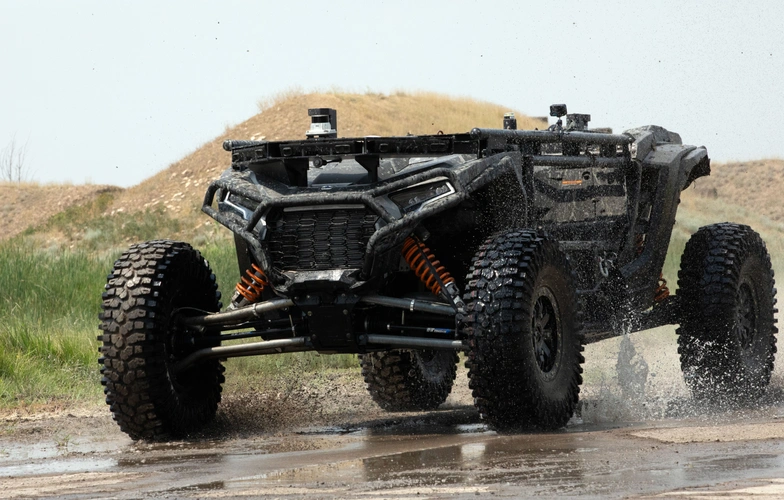
ULTRA is an autonomous ground vehicle for GPS-jammed, low-comm environments, with sensor-based navigation, and a modular payload bay.
The US Army has field-tested the Uncrewed Long-range Transport Autonomy (ULTRA), an autonomous ground vehicle built to deliver battlefield supplies without a driver, remote operator, or GPS support.
Developed by Overland AI, the platform combines the company’s OverDrive autonomy software with a military-grade chassis, enabling it to handle complex and unpredictable terrain.
Its onboard sensor suite includes stereo cameras, light detection and ranging tech, thermal imagers, inertial measurement units, and GPS-denied localization tools. These allow the vehicle to perceive terrain, detect obstacles, and reroute in real time, even in low-visibility, jammed, or comms-degraded conditions.
ULTRA features a modular payload bay capable of carrying up to 1,000 pounds (454 kilograms). The loadout can be tailored for supply drops, sensor deployment, casualty evacuation, or explosive ordnance delivery.
Designed for extended missions, the platform delivers over eight hours of endurance depending on payload and terrain. It also offers all-electric or hybrid drive options for greater operational flexibility.
Complementing its physical performance are cyber-hardened processors and tactical mesh networking, enabling secure operation and seamless integration with command-and-control systems.
Positive Feedback
Soldiers from the US Army’s 1st Squadron, 91st Cavalry Regiment put ULTRA to the test during Exercise Agile Spirit 25 in Krtsanisi, Georgia.
The vehicle completed several fully autonomous resupply missions across the rugged, forested terrain of the Vaziani Training Area, simulating frontline logistics conditions.
Tasks included point-to-point delivery, off-road maneuvering, autonomous convoying, and cargo drop-offs, all without reliance on satellite navigation.
Troops noted how ULTRA adjusted its route in real time, navigated around obstacles, and helped cut down exposure to threats like improvised explosive devices and ambushes.
Further trials are planned for late 2025 and early 2026.